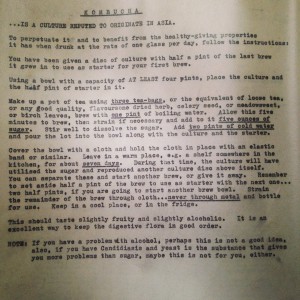A promo video made during a workshop in late 2023. Shot and edited by Cian Brennan
I spoke about why I do what I do and my inspirations.
A promo video made during a workshop in late 2023. Shot and edited by Cian Brennan
I spoke about why I do what I do and my inspirations.
Another day sharing and connecting with new people- the day focused around the knowledge about the safe, effective powerful medicine and delicious safe food (once detoxed) of the Fly Agaric Amanita muscaria.
The day spent in ode to and in reverence of sharing the knowledge around the mushroom with the worst reputation 🍄🍄🍄 and that has so much to offer us. And I am not even talking about it’s shamanic use!
We made infused oil from dried caps, we made an alcohol extract of the fresh caps- both for effective external pain relief. We talked about the cultural context of this mushroom and how is it possible that it’s reputation can be so drastically different from the reality. We discussed the toxins present and how dangerous they are/ and aren’t. How to detoxify, how to decarboxolate, how to safely avail of the many ways in which this mushroom can nourish us: physically, spiritually, and how refreshing it is to have the correct knowledge rather than the story that has been repeated for far too long.
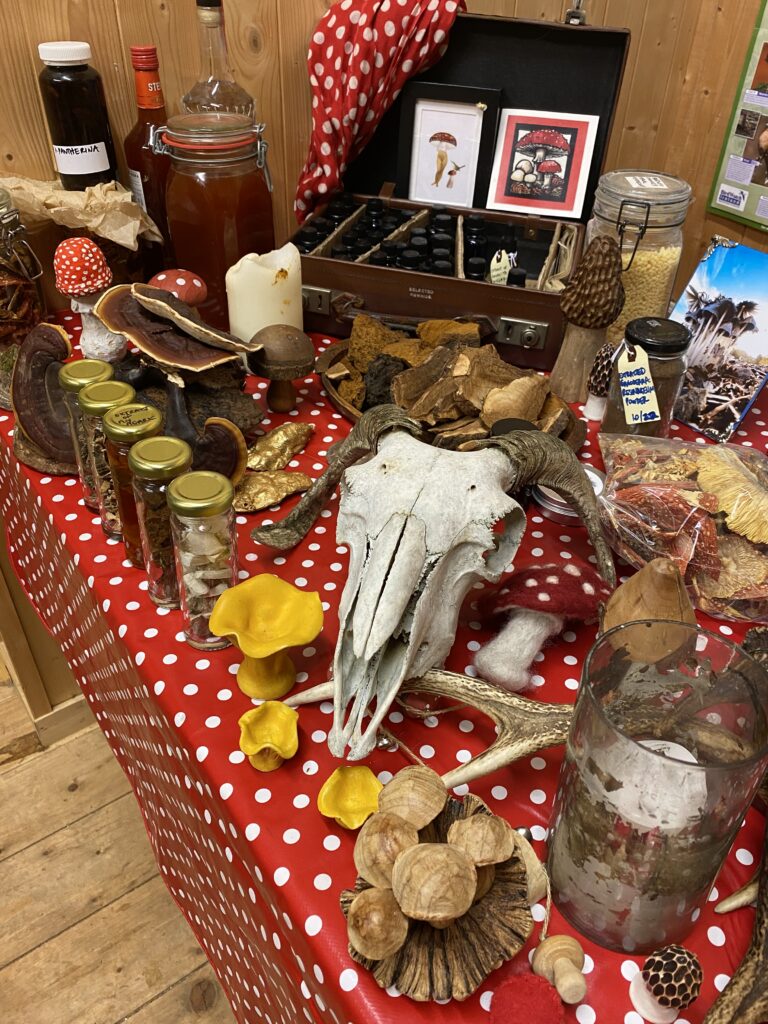
I often get asked about this mushroom- with people hoping for a 2 minute answer from me- how to use it as food or medicine- however I usually choose not to engage in this way. A two minute answer would be irresponsible. I prefer to spend a whole day discussing all perspectives and context of this mushroom. I don’t advise on anyone using it for food or medicine without a deeper understanding. I don’t advise any beginners to eat any Amanita, ever.
However there is a lot to discuss and learn and the relief from chronic pain for many who have tried the extract externally is astounding and no less than magical.
✨✨✨✨✨here’s to debunking some of the unnecessary fears we’ve been told for too long!
Amanita Dreamer is coming over to join me in a workshop or two in 2023 so do join my mailing list or WhatsApp notifications only group if you’d like to know more!
Opt in here: https://chat.whatsapp.com/EaZ0yi9URLb9aObQ2ne0tB
Hope to see some of you in the coming year for this or many other kinds of mushroom education and offerings!

Tomorrow this workshop takes place for the last time in 2022. It’s fully booked, but should you like to book in for 2023 the dates are live already for booking! Just added some spring dates as well as autumn dates for the coming year.


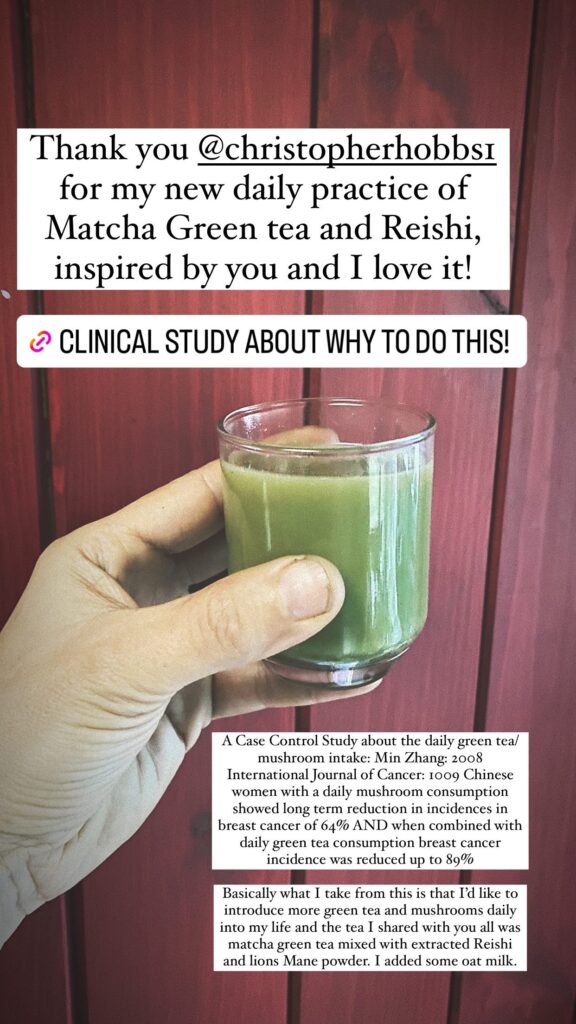
Here’s the clinical study that indicates why you and everyone might like to do this too:
https://onlinelibrary.wiley.com/doi/full/10.1002/ijc.24047
I had the pleasure of meeting Christopher Hobbs last month at the Radical Mycology Convergence. Over breakfast he shared that he has a daily morning ritual of taking Matcha green tea and reishi mushroom extracted powder every morning for many years.
I learned about this Clinical Study through my medicinal mushroom training with Fred Gillam which corroborated why this could be such an excellent idea.
I have really enjoyed bringing this practice into my morning routine.
https://chat.whatsapp.com/BsC8TH1NNEv074fcXfsg3E

This group is notifications only so it will not clog up your inbox.
Yes I do have the mailing list option, also but to be honest I don’t use it much, yet! This is in addition to, until i get around to finding the most effective way to communicate to those that want to know more! Thank you!
Just landing back home to Ireland after a whirlwind trip to Mulino, Oregon for the Radical Mycology Convergence hosted by Peter McCoy @radmycology and Jason Scott @feralfungi and born of much dreams and hard work of many!
It was a joy beyond words to have attended and a great honor to have been invited as a speaker!
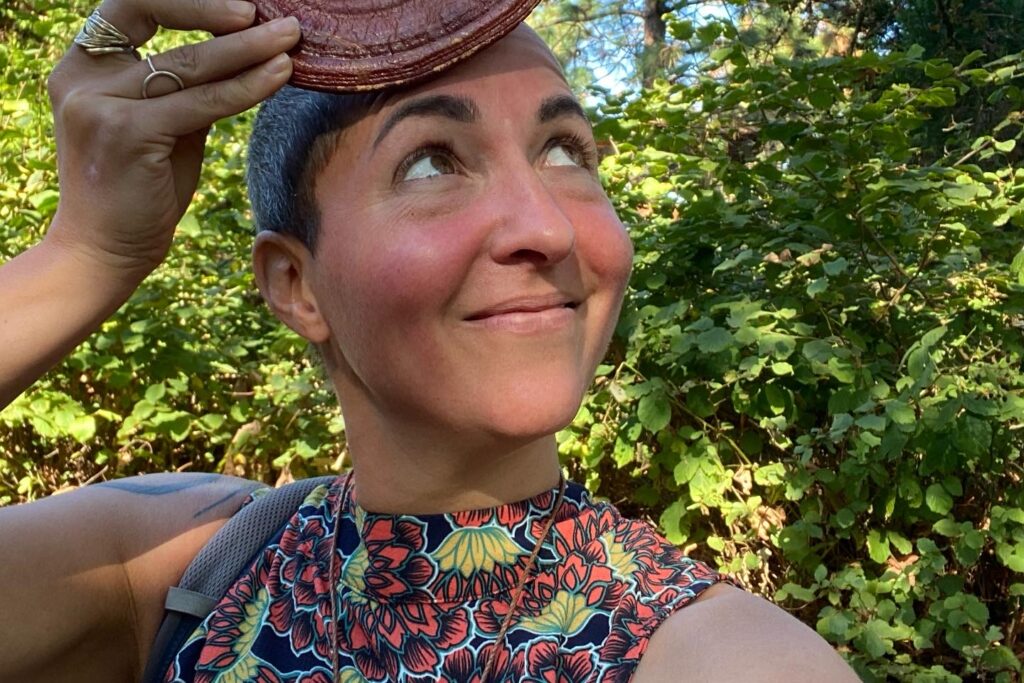
I offered two talks at the Convergence: Medicinal Mushroom preparations and all the ways I use them in my life as food and medicine- and a second talk on Mushroom ‘Coffee’ Alternatives using trees, roots and fungi. And on the Sunday morning on a Medicinal Mushroom panel with Christopher Hobbs, Robert Rogers, Jason Scott and Shane Norte.

I’ve shared the notes on my website for anyone who is interested!
It was so amazing to connect with so many myco folk such as: @radmycology @amanitadreaming @feralfungi @christopherhobbs1 Robert Rogers, @fly_agaric_press Kevin Feeney, William Rubel, and so many other cool folk with such interesting and diverse interests with fungi! So many new friends made I can’t tag you all. Please stay in touch!
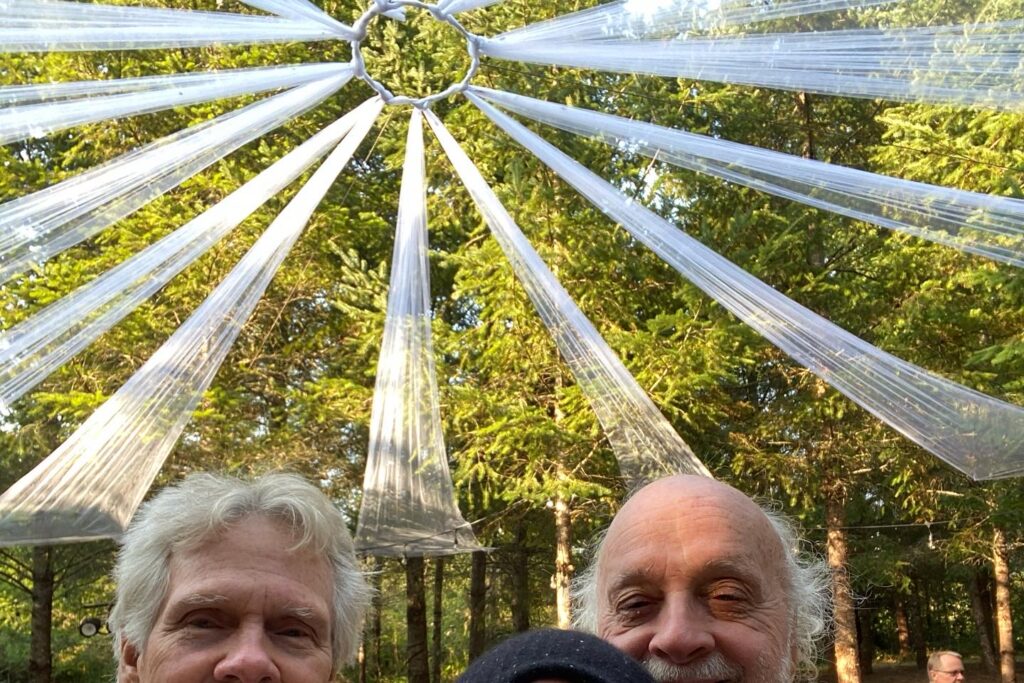
Extra big thanks to @feralfungi and Kelsey and @ashley.bonn for putting me up while in Portland and to @indra.c.h.a for feeding me incredible concoctions and @swiminair for looking after me so well and felted fly agaric art @spore.dust for letting me try on the Turkey tail headpiece @erintheforest for incredible fungi ceramics @jonicampile best camping neighbour and of course to @brownbottlefarm for the kindnesses and amazing venue and tent loan and fresh ginger root and friendships! @ckylum for tea sharing @twoowlsproductions for giving me a lift and the chats and hopefully staying in touch about video footage 🤞🏼!! @brandon_feinberg for the photos shared here♥️♥️
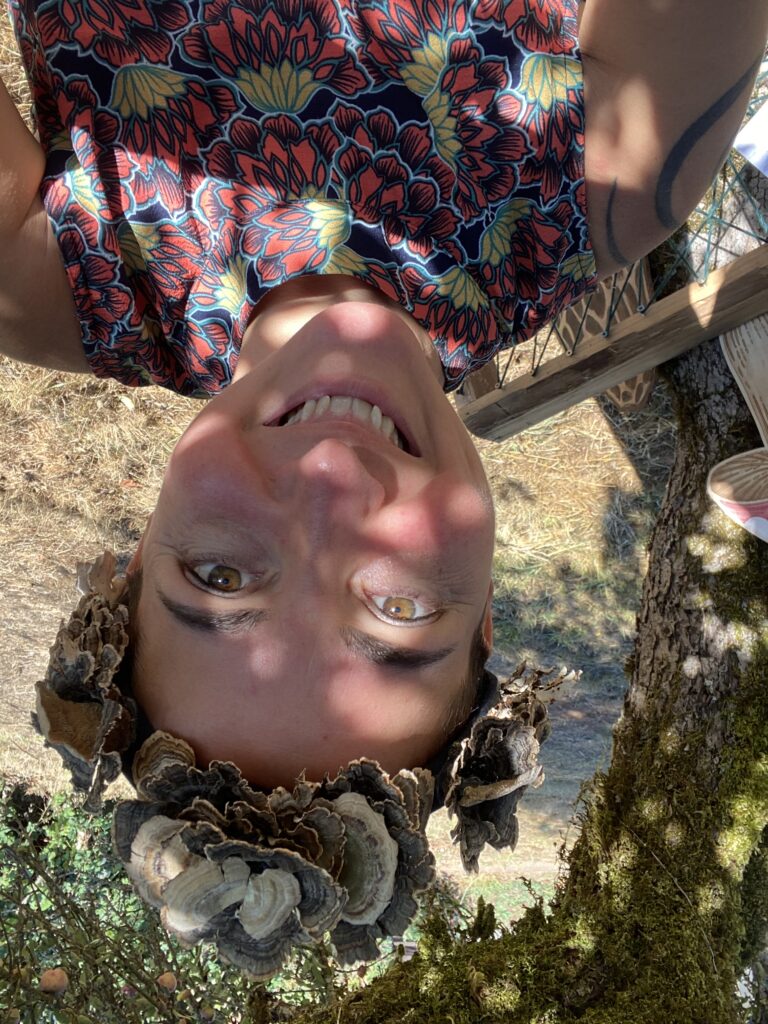
So many more to thank: @myco.nutri for Mushroom powders to share and use during my workshops, @mushroom.marauder for very cool sticker art to share!
Thank you everyone! My heart is so full!
Here’s a link to the Google doc if you’d like to download these notes and recipes from today’s talk:
https://docs.google.com/document/d/1-1FU8WU6dEySRNoPF3ymuVxwC5z0j2Q4UhnG9RQ06Ys/edit
Radical Mycology Convergence- Make your own Medicinal Mushrooms Extract (120 min.)
Session V – Friday, 2:00 pm
The Rhize Stage With Courtney Tyler of Hips and Haws Wildcrafts
A hands-on workshop discussing a diverse range of tasty and health promoting methods to incorporate medicinal mushrooms into your diet, your regime, your palate.
We will discuss, taste, explore how and why to add more mushrooms into your diet. How to pickle or ferment them, etc. We will talk about why making medicine from mushrooms is so different than when working with plants. How mushrooms impact our micro-biome (our myco-biome) and how they benefit our immune system. We will learn about how to best extract the medicinal compounds from fungi and have a hand-on section making medicine to bring home with you.
I went to the woods because I wished to live deliberately,
to front only the essential facts of life,
and see if I could not learn what it had to teach,
and not,
when I came to die,
discover that I had not lived.
-Walden
“Mushrooms emerge from beneath the forest soil and from the trunks of old and dead trees—their mycelia decompose organic wastes and bring forth fruiting bodies that can heal us, nourish us, or transform our consciousness.” —Sean Donahue
Courtney Tyler- based in Wicklow Ireland- Hips and Haws Wildcrafts
Preserving the wild harvests through fermenting, vinegar oxymels, shrubs, alcohol – tinctures, brewing my own, kombuchas, meads, sugar as syrups and cordials etc.
Deepening my knowledge of medicinal mushrooms combined with my other skills has lead me on an exploration of concoctions and I love to share how I bring these preparations into my every day life. While preserving the wild and at the same time increasing their bioavailability, nutrition and flavour in the process.
Simply eating more mushrooms in any and all forms is an important way to improve our health. Mushrooms are made from chitin and their cellular structure is a type of insoluble fibre which can positively impact our micro-biomo or our ‘myco-biome’ by feeding the bacteria in our gut- thereby increasing gut bio-diversity. Our myco-biome is already full of fungi, viruses, and dead bacteria which are a contributing factor to our gut health- the fungi in our guts perhaps consuming the dead bacteria etc and having some function in our immune systems.
Mushrooms effects on promoting vitality and increasing immune function is well documented. They can help to reduce inflammation, prevent cancer, combat heart disease or fight off colds, combat allergies and infections and help balance blood sugar levels and support the body’s detoxification mechanisms. There are many current studies that help us understand their exact mode of action that supports this historical use.
From a dietary perspective mushrooms are low in calories, high in proteins, fibre, iron, zinc, essential amino acids, vitamins & minerals. It appears that mushrooms are prebiotic – they feed the bacteria in our gut and improve and promote diversity in our gut- therefore they help our body strengthen itself and fight off illness (bacteria, viruses and other fungi). They also do this by maintaining physiological homeostasis and restoring our body’s balance and natural resistance to disease.
Mushrooms contain active polysaccharides, one of which is a type of soluble fibre called beta-glucan. This compound activates parts of your immune system, including immune cells called natural killer cells and macrophages, and by so doing it increases your body’s ability to fight infection and possibly even stop the growth or progression of tumours.
Mushrooms also contain B vitamins as well as a powerful antioxidant called selenium, which helps support the immune system and prevent damage to cells and tissues.
Reference longitudinal studies that show the increased longevity and decreased morbidity and dis-ease from higher and more regular mushroom consumption.
Stephen Harrod Buhner:
“One of our greatest fears is to eat the wildness of the world.
Our mothers intuitively understood something essential: the green is poisonous to civilization. If we eat the wild, it begins to work inside us, altering us, changing us. Soon, if we eat too much, we will no longer fit the suit that has been made for us. Our hair will begin to grow long and ragged. Our gait and how we hold our body will change. A wild light begins to gleam in our eyes. Our words start to sound strange, nonlinear, emotional. Unpractical. Poetic.
Once we have tasted this wildness, we begin to hunger for a food long denied us, and the more we eat of it the more we will awaken.”
The differences between using plants and fungi as medicine: the cell structure and how to best extract the beta-glucans and beneficial polysaccharides by long slow exposure to water- such as a slow cooker. Adding these to broths, smoothies, ice cube trays, sauces- any way you can!
Making the broth decoction with shiitake mushrooms (or giant Polypore, or Maitake, or TurkeyTail) and then using some of the liquid and the mushrooms themselves to make the Momofuku pickle. And use the broth for a ginger miso mushroom broth.
Vit D and exposure to sunlight. Fungi, like animals producing Vit D on exposure to sunlight and the importance of this vitamin for many metabolic functions. In Ireland at least, many of us are deficient in this. How to do this best: sliced or gills up in direct sunlight for up to 4 hours.
Discussion of simple cold alcohol extractions with enzymes present and the efficacy of amanita muscaria prepared in this way for external pain relief and for potential micro-dose (brain fog due to Lyme or post menopause, for alleviation of anxiety, etc)
Fungi and animals evolving alongside each other and our shared receptors and neurotransmitters (such as AM and Acetocholine and Psilocybin and Serotonin and mushrooms in general and ergothioneine (an amino acid we are often lacking but have the receptors for).
And the medicinal efficacy of plantain – plantago lanceolata – my experience in it for use against insect bites and then the correlation of the mushroom flavours in the flowers and seeds. The endophytic relationship of snowy wax caps within the cell walls of the plant and their enzymes that attract and consume insects- how these enzymes can be utilised in a spit poultice to break down the problematic insect bites inflammation and allergy response. Ref: Fred Gillam and Natasha of the Wild Side of Life. Discuss my testing with horse fly bites. Bee stings too.
Button mushrooms and gluten sensitivity- eating raw mushrooms to introduce the enzymes needed to counteract accidental or problematic gluten ingestion. (Fred Gillam Wild Side of Life)
Discuss Birch Polypore- Fomitopsis betulina- aka: Razor Strop fungus or white chaga, more sustainable and abundant than Chaga (in Ireland at least). Like chaga both derive some of their medicine from the birch tree. Long tradition of use in medicine as an antimicrobiano, anticancer and anti-inflammatory agent. Pharmacological studies Anti-viral and gut conditions, anti-parasitic, neuroprotective and immunomodulating activities of this mushroom.
Razor stropping- at barber shops- cut a strip from the fungus, dried it, attached it to a flat wood and used it. As a sharpening agent , giving their blades an antiseptic, anti-fungal and styptic wipe- very clever! (Also a wild band-aid).
ID features: found prolifically on birch, often forming a visually stunning stairway leading up the tree of grey-whitish brackets, guiding our eyes upwards to heaven. Otzi, How to harvest and dry it- collect fresh young juicy brackets. Simple (decoction) tea. Lemon, honey, ginger. Spectrum of edibility when young. Bitter.
Elderberries proven anti-viral compounds. Nice combination when mixed with BP. Also good action on gut issues with BP- have heard great success with IBS like symptoms.
Ginger acts as an additional anti-viral, adds flavour and helps the synergy of the other herbs together. Stephen Harrod Buhner – Herbal Anti-virals
Fermentation of mushrooms: Pascal Baudar. Noma. Kimchi. Dehydrating. Texture. Salting down to preserve. Jerky. Beefsteak. Ceps. *Fermentation as a method of decarb of FA (alternatives are milk/ yogurt, lemon)
Gomasio. Samples. Great way to add some wild everyday including powdered mushrooms. *Be sure they are okay as raw powdered mushrooms, like ceps. *I see lots of people adding powdered shiitake or other and should not!
Recipes to share:
Gomasio
A Japanese food condiment generally made with 5 parts toasted and crushed sesame seeds to one part salt.
I love it just like that but usually cannot resist adding a bit of wildness to it, to sprinkle as my version of salt seasoning to my savoury meals.
My favourite optional extras: seaweed flakes, nettle seeds, dried mushroom powders (in particular porcini ‘dust’ which is simple the dried and powdered and very tasty older cep caps- pure mushroom hit of flavour).
Elderberry and Birch Polypore Anti-viral Syrup
Decoction of Birch Polypore in slow cooker for 12-36 hours. If using dried elderberries you could add them at the same time, same for the ginger root.
Strain and combine this liquid decoction. Optional extras: cloves, licorice and star anise used in moderation.
Add in an equal amount of apple juice concentrate, sugar of choice and or honey. The honey must be cooked or it will ferment if raw. Use raw honey for additional medicinal benefits but consume sooner, and or keep in the fridge.
*I always add a shot of alcohol into the bottles before adding the syrup (and/or infused vinegars at the boiling stage to increase acidity and therefore shelf life).
Ginger miso broth with medicinal mushrooms
DAMN GOOD DASHI by Katie Sanderson
Dashi is a type of cooking stock that is sometimes considered the backbone of Japanese cuisine. I personally think it’s about time that we started incorporating it more into our diets too. It’s the simplest way of extracting the flavour of seaweed, an instant pick me up and a great source of iron and nutrients.
By cutting the seaweed up there is an increase of approximately 35per cent more umami and very obviously a greater tasting stock.
Don’t wipe the white-ish powder off the seaweed. Seaweeds are a great source of Glutamic acid and thus naturally occurring MSG. ( that’s what the white stuff is)
Use Japanese Kombu, Irish kelp or Irish Dillisk (or use what you have!) (cut it up into thin ribbons).
Place the cut up seaweed in the cold water and let steep for a half hour, place on a gentle heat not letting the temperature rise above 60C/140F. For thirty minutes until the flavour is to your liking. (Put seaweed aside for pickling). Or Prepare daishi the night before by leaving Kombu in cold water and letting steep overnight. This will keep in your fridge for 3-5 days.
Then add your mushrooms such as dried shiitake or mushrooms of choice to the slow cooker with your seaweed dashi and simmer for 30 minutes up to 36 hours (the more time, the more medicinal compounds are extracted into your broth). Strain out the mushrooms and put them aside to pickle in the Momofuku recipe below this one.
Simple MISO SOUP
Add 1 litre Dashi, 1 TB Miso, 1 TB Tamari soy sauce: Heat your dashi, whisk in miso and tamari. Add your flavourings. Chopped carrots, cooked pumpkin, crispy fried mushrooms, lots of spring onion, coriander etc.
Momofuku inspired Balsamic Shiitake Pickle
Makes enough for a litre container
This recipe has my adaptions below.
2 cups dried shiitake mushrooms (tough stems removed and kept for stocks) **(definitely better with dried mushrooms over fresh- it improves the finished texture) **(also good with other good texture firm dried wild mushrooms).
½ cup soy sauce (I used Tamari- with some koji added!) but any soy sauce will do.
½ cup sherry vinegar (I used Balsamic)
¹⁄³ cup sugar (honey also works!)
(*Optional- I added seaweed in too!)
1 piece (7.5cm) fresh ginger, peeled and sliced into coins of a thickness that will be delicious pickled
1. Put the mushrooms in a bowl or a pot, and just cover with boiling water. Let stand 15 or so minutes. Reserving one cup of the soaking liquid, drain the mushrooms and slice them.
**(Alternatively do this in a slow cooker for 36 hours for maximum medicinal benefits and flavour!)
2. Combine the mushrooms, soaking liquid, soy sauce, vinegar, sugar, and ginger in a saucepan. Bring it to a boil, reduce it to a simmer, and cook for 30 minutes. Remove the pan from the heat and let the contents cool down to room temperature.
**(I add the seaweed at the end rather than boil it).
3. Decant the contents of the pan into a jar and chill well – these taste best straight from the fridge.
These will last for months in the fridge as long as covered in liquid. Enjoy the liquid. It’s as good and precious as the mushrooms are!
Chocolate covered Jelly Ears
Try soaking the dried Jelly Ear mushooms in interesting liquids, juices, liqueurs, etc: I prefer elderberry liqueur but have used Kahlua or whatever I have) before drying a little again, then covering in chocolate to make something quite like an interesting “turkish delight”.
Fergus Drennan aka Fergus the Forager might be the one who first came up with this idea?
Medicinal Mushroom Chocolate Mousse/ Mushroom Hot Chocolate (thanks Barbara Faibish)
50g cacao butter
2T coconut oil
3T cacao powder
3T coconut palm sugar, or sweetener of choice
2t mushroom powder of your choice (I used lion’s mane and cordyceps)
½ cup of cashews soaked for a few hours and then drained
dash of vanilla extract
pinch of sea salt
2 cups of warm water or mushroom tea (but use mushroom tea of course! I used a decoction of Turkey Tail, Chaga, and reishi- but you should use whatever you have!)
Optional extras: coconut milk, hemp seed powder, protein powder or other extracted mushroom powders.
Melt the cacao butter and coconut oil slowly in a bain marie. Add the melted butter and oil to a blender with the rest of the ingredients and 2 cups of mushroom tea.
Blend until smooth. Taste and adjust to your liking. You can add more sweetener, more mushrooms, more cacao.
This makes a comforting and warming drink. I add less cacao butter if I want to drink it as a hot chocolate drink. Alternatively pour into ramekins, set in the fridge and you have a delicious chocolate mousse dessert. This mousse is delicious as is, perhaps dusted with some cacao powder, but to bring it to another level, top with coconut milk kefir or yoghurt and sprinkle with bee pollen or other pleasing garnish.
Fly Agaric extract – external remedy for pain
https://www.henriettes-herb.com/plants/amanita/muscaria.html
Slice fresh caps and cover in vodka. Shake regularly and strain after 4-6 weeks.
Apply 3-4 drops externally at the site of pain, as needed.
Here’s an interesting video about the science of cooking mushrooms.
Courtney on Welcome to Mushroom Hour
Courtney Tyler
Hips and Haws Wildcrafts
phone- +353 (0)86 376 4189
Who would have thought? If someone would have told me I’d be spending the majority of my time picking mushrooms, looking for mushrooms, talking about mushrooms, eating mushrooms, teaching about mushrooms, reading about mushrooms, posting about mushrooms, making medicine from mushrooms, taking photos of mushrooms, smuggling giant puffballs in my jacket like a pregnant woman on a Ryanair flight last night, dressing up like a mushroom, going to Portland next month with @radmycology going to the jungle to hunt for zombie fungus, making my living from my true passions and feeling more connected to myself and the world than ever before, etc etc I’d have thought you were definitely mad!
But it turns out that I am most CERTAINLY mad! And in the most spectacular and beautiful life affirming way! 🍄
Thanks @theculturedclub for sending me this. And thanks to all who indulge me in my many madnesses. And to those who have the patience to hold my hand for the more challenging ways in which my madnesses present themselves. You know who you are! ♥️ I love you! 🐢
And on a separate but very same note- I was recently diagnosed as Neurodivergent (ASD spectrum) and ADHD. And I am sharing that with you for a couple of reasons.
♥️♥️♥️Thank you for reading this! It’s shared from an open and honest heart and I hope you can see the value in this ❤️❤️❤️
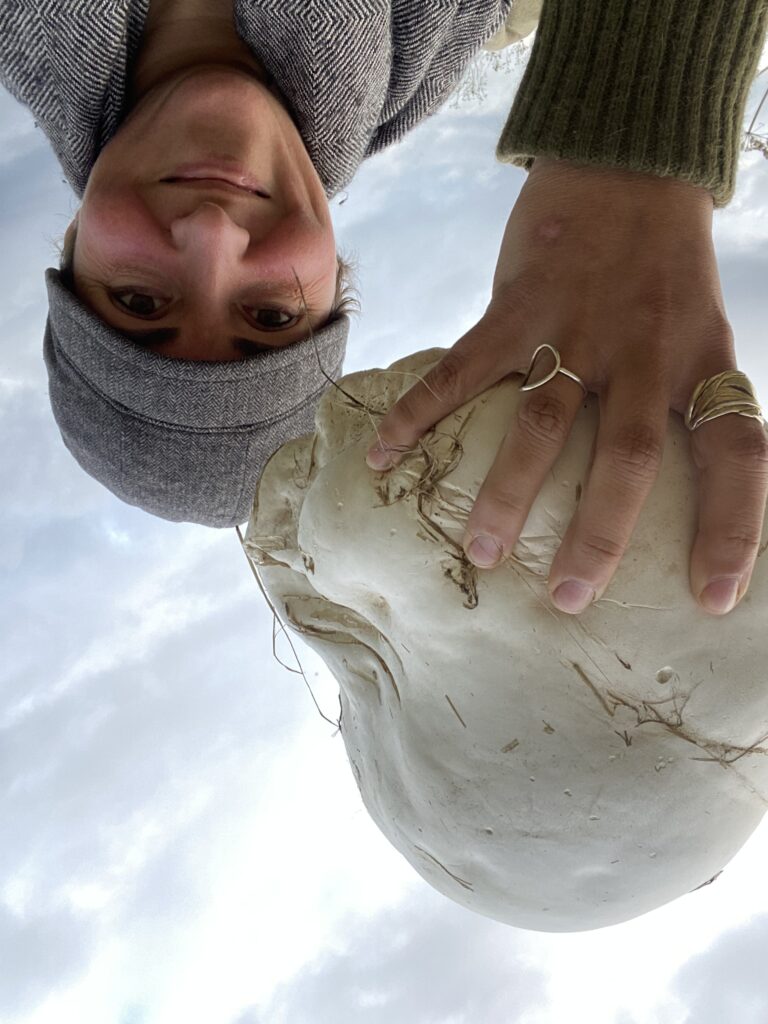

Just wanted to highlight some of my favourite mushroom shots that I have taken. Usually this involves playing with perspective.
Should you wish you use or share any photography from my website, please do ask and or credit me! Thank you!
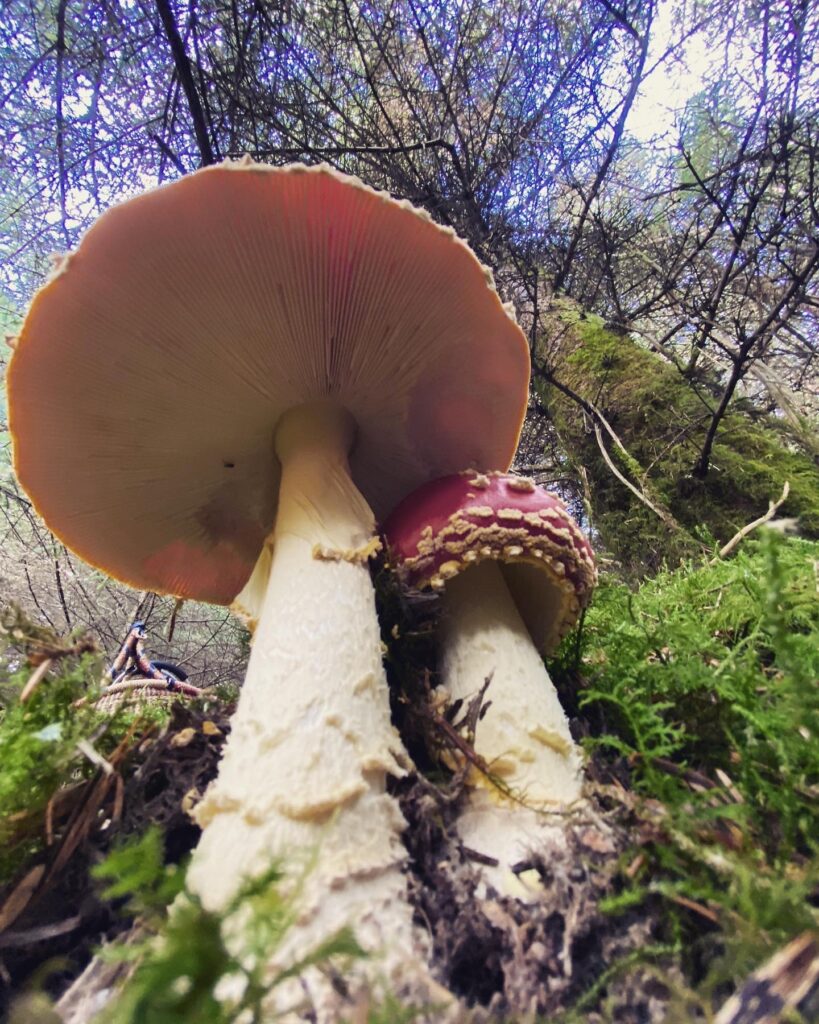
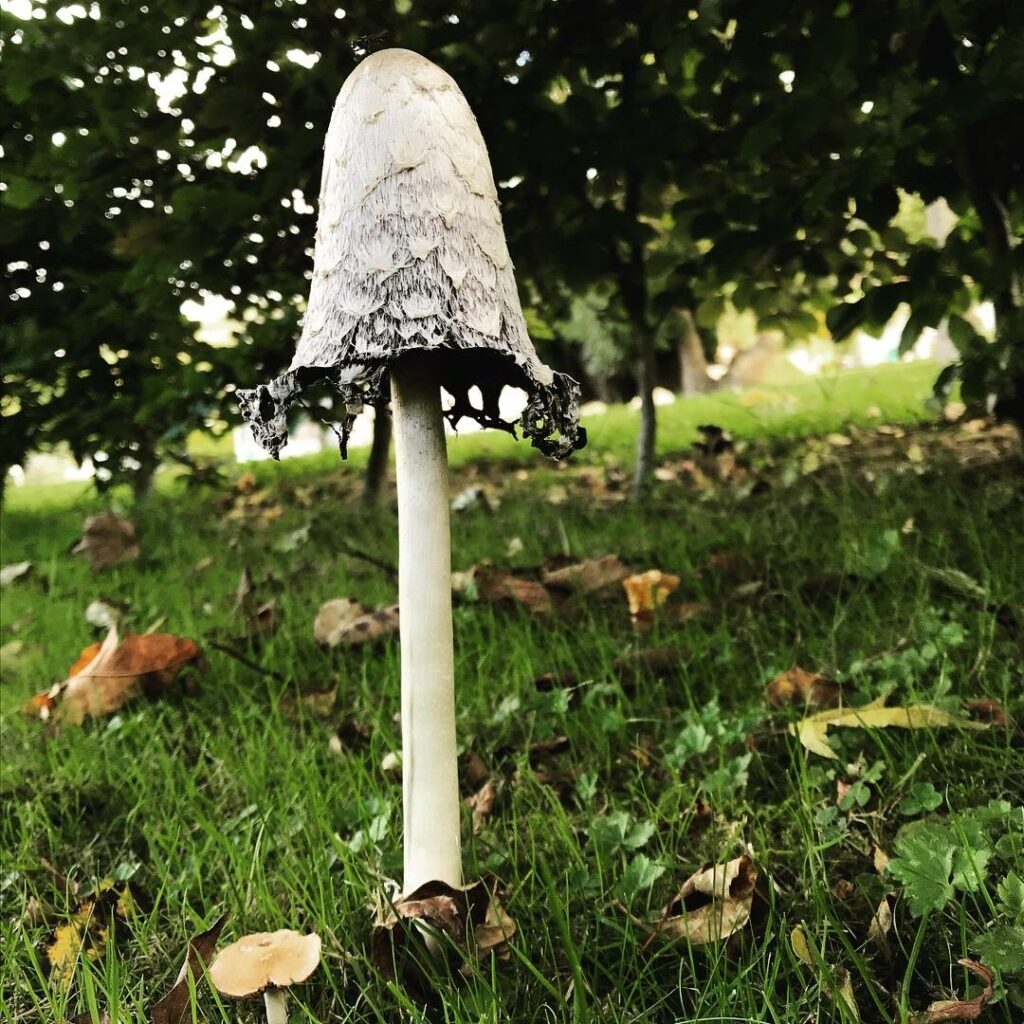
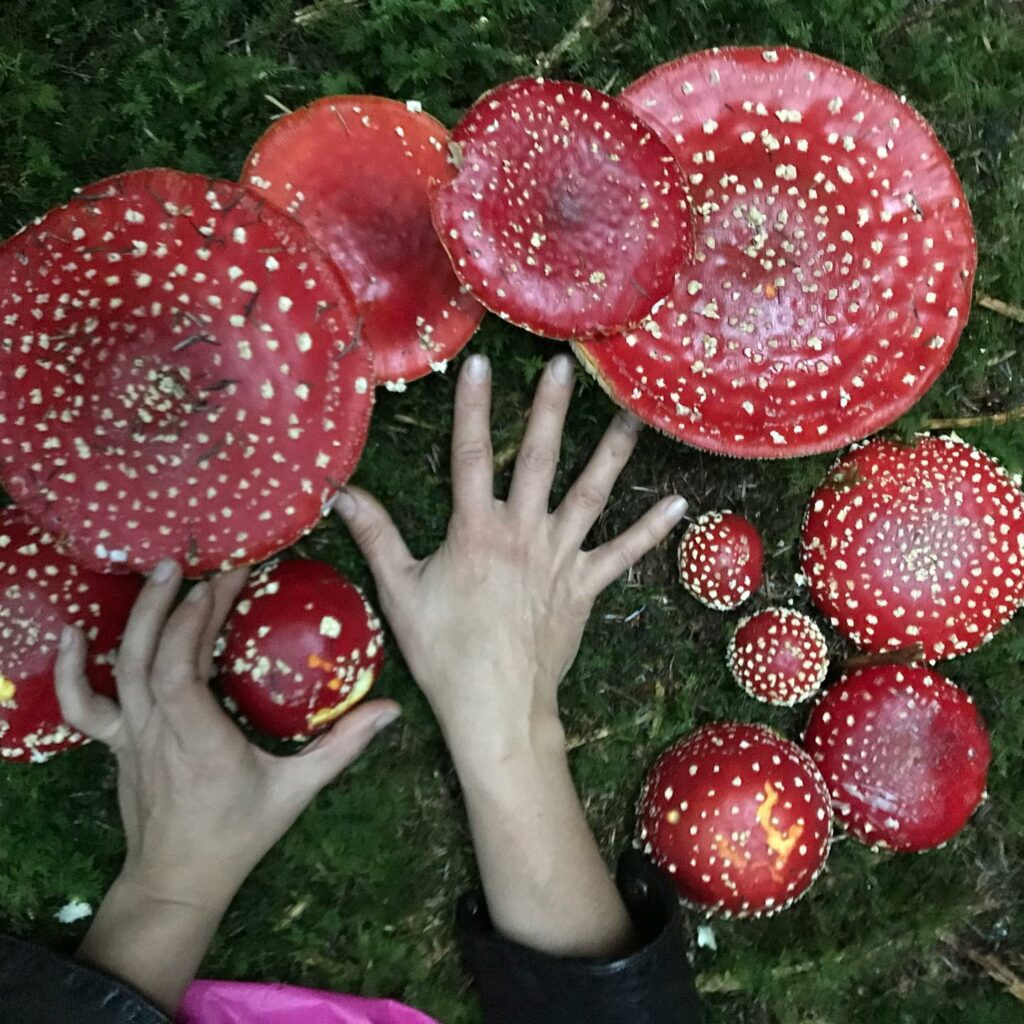

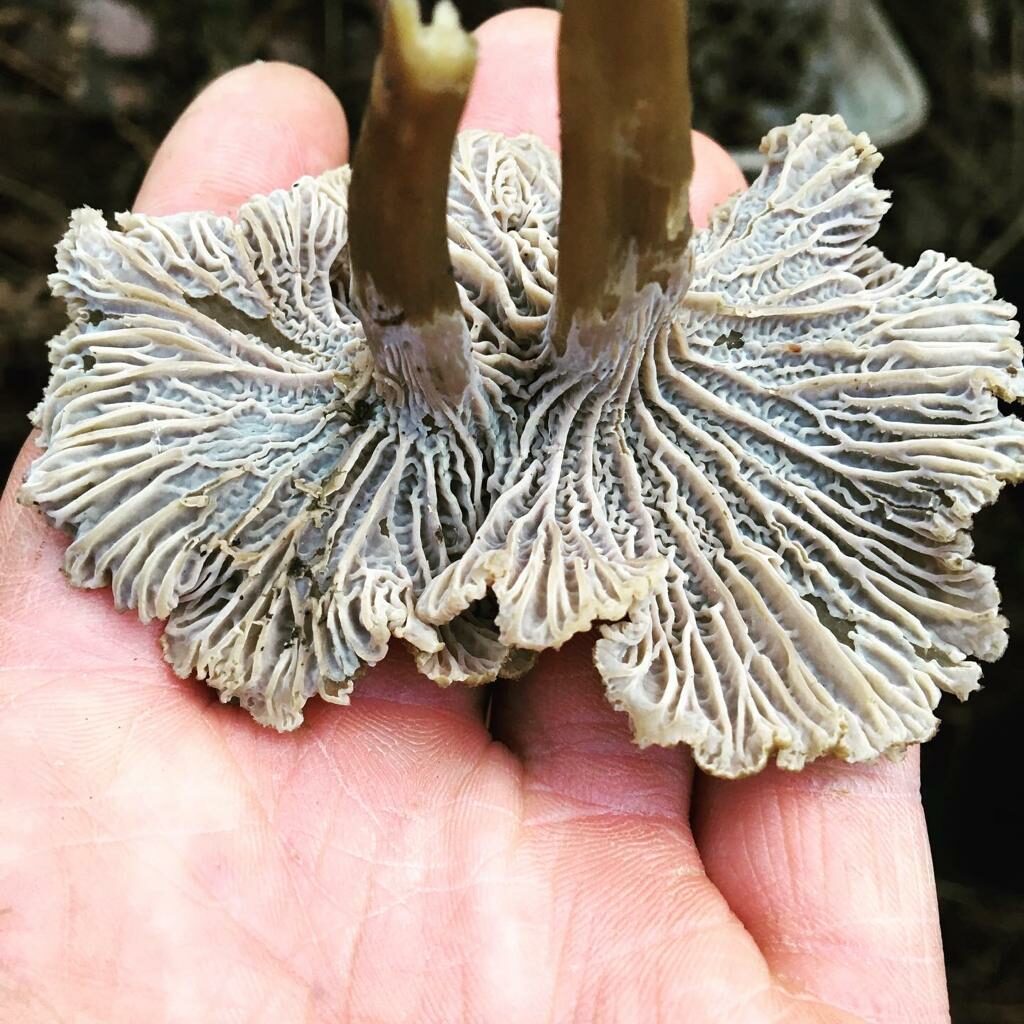
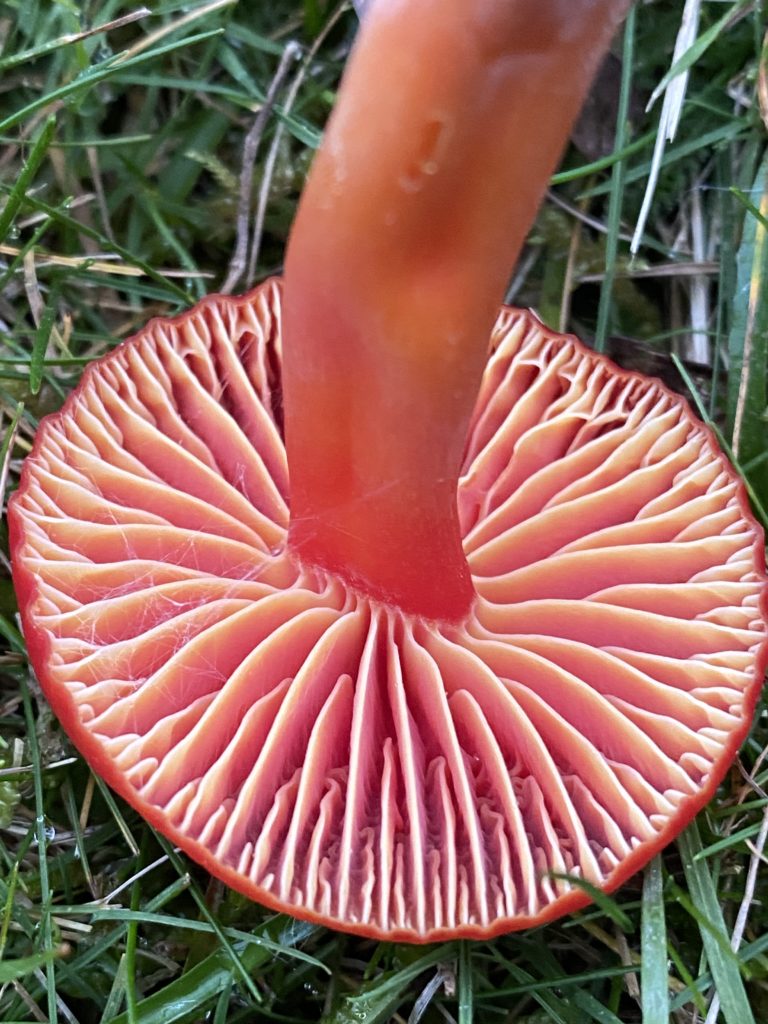
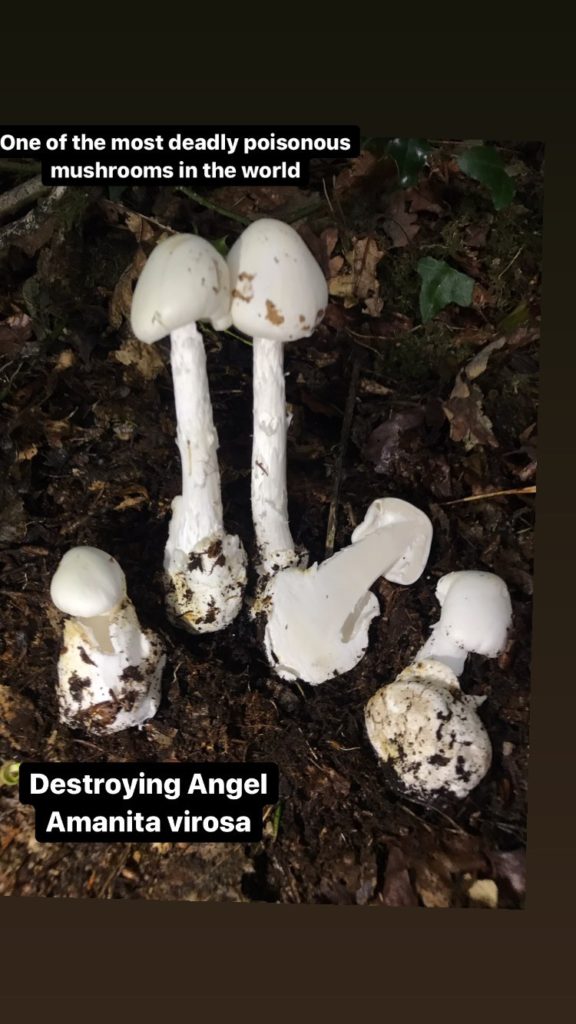

Directions on How to Make Milk Kefir.
First you must obtain the grains. These can be purchased (one reputable supplier is the Cultures for Health website) or if you ask around in your community you should find someone who would be happy to share their grains with you.
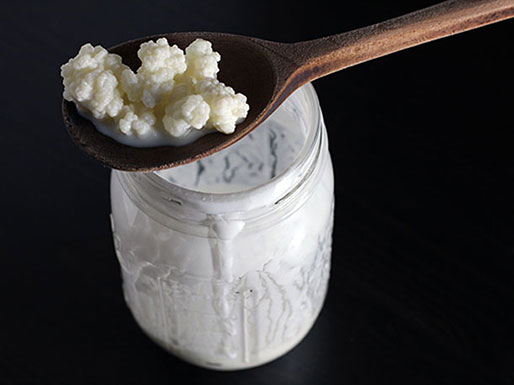
I’d recommend finding some milk kefir grains on the Irish Fermentalists Facebook page- there is often someone near you willing to share. They are not actually a grain at all but a yeast/bacterial fermentation starter. They look like small grains of cauliflower.

The next step is to obtain the best quality milk you can find. This can be organic, raw, unpasteurised cow’s or goats milk. Or, any milk that you are used to drinking will do, as long as it isn’t UHT milk. The grains do best on dairy milk but it is possible to culture nut or soya milks- but you’ll have to read up about how best to do this so that the grains don’t starve over time. Bear in mind that even if you normally avoid dairy products like i do, once the milk has been turned into kefir it will contain little to no lactose so everyone should be able to tolerate it unless there’s a milk allergy to casein. From what I’ve read some of the casein also gets broken down during the fermentation process.
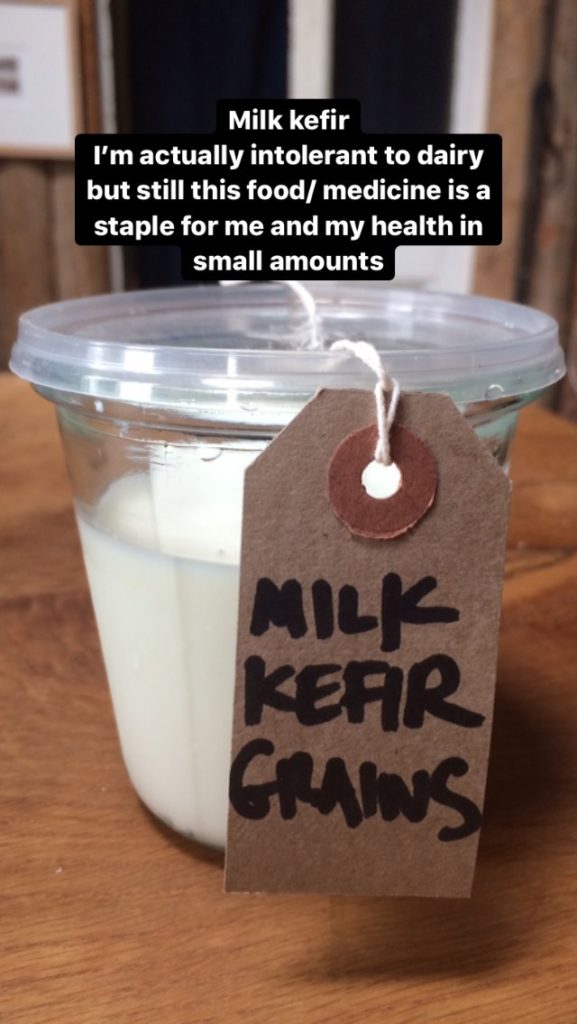
The next step is to place approx 1 teaspoon to 1 tablespoon of grains into a glass jar with anywhere from a cup to 500 ml milk, or whatever amount your family will consume in a day or two. Cover the glass jar with a coffee filter and a rubber band or a clean tea towel and leave it somewhere it won’t be disturbed or forgotten for the next 24-48 hours. Look in on your milk kefir every now and then, give it a stir, and do a taste test. It’s ready whenever you like the taste of it. Normally it will thicken to a consistency like cream or a runny yogurt and have a pleasant yeasty aroma. Depending on the warmth of your room and the grains to milk ratio it can take anywhere from 12 – 48 hours to be kefir. If you find the liquid has started to separate into curds and whey- don’t be alarmed- just stir it all in, strain out the grains and refrigerate the kefir. Next time you could leave it a little less time. The taste will become slightly more sour over time, taste it at various stages and see where you like it best. Strain out the grains with a strainer and repeat the whole process. The milk kefir will keep in your fridge for up to 3 weeks. It’s ok to add the next days kefir to the same container if you still have some left from previous days.
A little about milk kefir in my experience:
Milk Kefir is a fermented dairy beverage- full of health promoting properties. I know that doesn’t make it sound hugely appetising. But, bear with me. This drink has been around for thousands of years. If you imagine yogurt, it’s not much different in appearance and nature. Kefir and yogurt are both good for you in that they contain a healthy dose of probiotics that line your intestines and feed your gut flora and in this way contribute to a stronger immune system. A healthy gut is where it all starts. Kefir has the advantage over yogurt in that it also contains healthy yeasts along with the bacteria. Both products, especially when made with full fat milk also contribute to your daily calcium, protein and vitamin needs. Best thing is, it’s so easy to make at home.
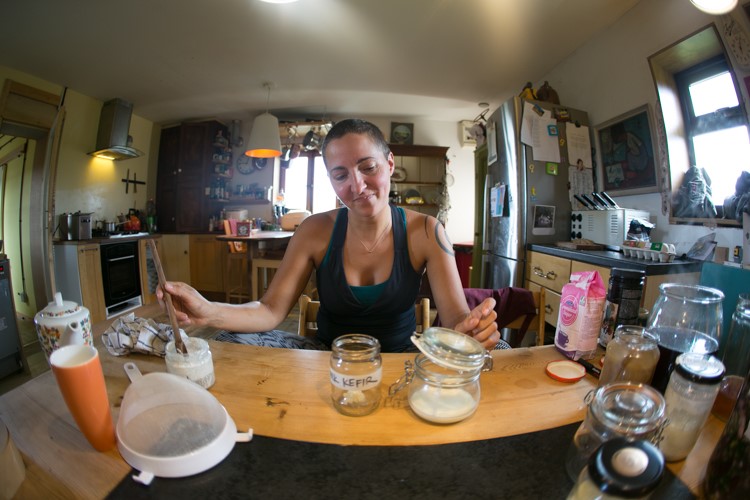
I used to spend a small fortune on quality probiotics from the health shops. I no longer buy them as I get a wider range of these same probiotics along with other strains from fermented dairy products along with kombucha and lacto-fermented veggies such as sauerkraut and kimchi. It feels reassuring to know how to provide my body with what it needs from natural foods rather than relying on what I need to otherwise buy in a bottle from a health shop.
Are you one of the many who suffer from dairy intolerance? I also have never tolerated cow’s milk well, although I was well into my twenties before I realised that this was the problem. It seems to be that my body can’t break down the lactose in cow’s milk well, and drinking cow’s milk, or especially cream makes me feel a strong headache, sore and bloated tummy, along with strong stomach pains, digestive problems and IBS symptoms. For many years I avoided cow’s milk dairy products (I could tolerate goat’s milk no problem- it has a smaller fat globule that makes it easier for humans to digest than cow’s milk does) but in recent years learned that both milk kefir and yogurt- made if possible with organic milk- were no problem to me. In fact there are studies that show that drinking milk kefir can help heal the issues that cause the dairy intolerance. I now find after a year of drinking milk kefir most days I can now tolerate more cow’s milk products such as a small amount of cheese etc than I’ve ever been able to do!
The kefir grains break down the lactose and casein in milk and convert these to glucose and galactatose. They also convert the lactose into B vitamins along with the probiotics.
Some of the other benefits I’ve personally seen from drinking milk kefir are: an improved digestion, less bloating, less prone to cystitis and yeast infections, and surprisingly but nearly best of all is that I found that my hay fever and seasonal allergies were vastly improved this year. I’ve struggled with an almost overwhelming allergy to pollen in the summertime. What’s worse than being allergic to nature! The increased beneficial bacteria in my gut helped ease my allergy symptoms. These benefits along with the savings on expensive probiotics are what have convinced me that kefir is a product that could benefit many people.
Check out the pdf that is provided for free from the Cultures for Health website. They have a really informative website which highlights many fermented foods and their benefits. They also sell the cultures of kefir grains among many other fermented cultures such as yogurt, kombucha, piima, cheese, etc. They have some free e-books that are available for download which I’d highly recommend if you’d like to learn more about how to prepare kefir and all the things that you can do with it in recipes etc.
Enjoy!
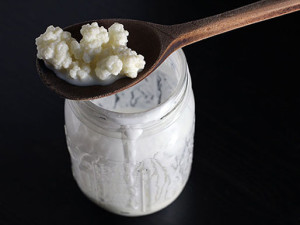
Kombucha
Kombucha is one of my favourite drinks. It’s a fermented sweet tea. The first time I saw Kombucha
I swore then and there that it would never pass my lips! That was about 15 years ago and thankfully I gave it a try in recent years. While the culture that ferments tea into Kombucha can look a little daunting, it’s grown on me to become something I look on with extra delight, it’s an ugly fascinating tasty and healthy science experiment!
The Kombucha culture is called a SCOBY which is an acronym for Symbiotic Culture Of Bacteria and Yeast= S.C.O.B.Y.
The basic premise is simple: obtain a scoby- again ask around in your community there’s bound to be someone who also brews Kombucha and can pass a scoby onto you. If not, you’ll have to buy one or make your own. If you’d like to make your own you can buy a bottle of commercial ‘live’ plain kombucha and grow one from that. It’s not complicated, you can google it to see the process. I’ll make another post about this specifically another day.
Feed the scoby a quantity of sweet tea that’s cooled to room temperature. Let it sit/ ferment for between 5-25 days until its at a perfect balance between sweet and tart. Usually I find approximately 5 days is perfect, but this depends on a few factors such as the warmth of the room and the ratio of scoby and starter to tea. After day 3, taste a little bit of the tea each day until its a taste you find a pleasant balance between sweet and sour. The sugar will be digested by the scoby and converted into probiotics and B vitamins and you’ll find the tea is less and less sweet as each day goes by.
My favourite reference book is a free download from the Cultures for Health website. If you sign up to their newsletter you can download their compilation of e-books one of which is about Kombucha. This has the most concise and useful information that I’ve found- even better than some books I’ve bought- and best of all it’s free!
Since I’ve been drinking Kombucha I’ve found a healthy replacement for fizzy sodas that are laden with sugar and chemicals. If Kombucha goes through a secondary fermentation and you add fruity flavours it can turn out far nicer than any commercial and too sweet drink on the market.
I’ll share my exact kombucha recipe with you next and a few other recipes that I’ve come across.
In the meantime this link from Cultures for Health is the recipe I follow. You can read more exact instructions here.
And this is the most important part, that you follow these ratios. With some other ferments I feel you can be a bit loose with measurements- but with kombucha it’s more important to be exact.
| Container Size | Tea | Sugar | Water | Starter Tea or Vinegar |
| One quart | 1½ teaspoon loose tea or 2 tea bags | ¼ cup | 2-3 cups | ½ cup |
| ½ Gallon | 1 tablespoon loose tea or 4 tea bags | ½ cup | 6-7 cups | 1 cup |
| Gallon | 2 tablespoons loose tea or 8 tea bags | 1 cup | 13-14 cups | 2 cups |
Here is a typed instructions from my Herbalism teacher Judith Hoad:
